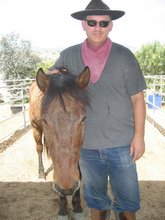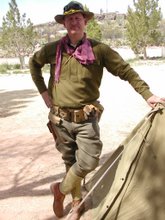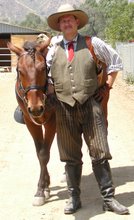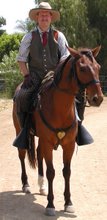For a little more information:
The Thoroughbred as it is known today was first developed in 17th and 18th century England, when native mares were crossbred with imported Arabian stallions. All modern Thoroughbreds can trace their pedigrees to three stallions originally imported into England in the 17th century and 18th century, and to 74 foundation mares of English and Oriental (Arabian, Turkoman or Barb) blood. During the 18th century and 19th century, the Thoroughbred breed spread throughout the world; they were imported into North America starting in 1730 and into Australia, Europe, Japan and South America during the 19th century. Millions of Thoroughbreds exist worldwide today, with over 118,000 foals registered each year worldwide.
While I don't profess any great knowledge of Thoroughbreds, I have ridden a couple of them and while some swear by them, the two that I rode were pretty hot and pretty flighty. One of them especially seemed just a moment away from wanting to bolt- she belonged to a guy I used to trail ride with and every so often, she would want to take off abruptly and my friend couldn't prevent her from doing so. This really made for an uncomfortable experience since Max would then get upset.
From what I've read, one of the biggest problems with Throughbreds these days is that they're being raced at a young age- 2 years old- before the body has completely developed and that they're subjected to great stress and strain before the body is ready for it. Also, it seems that while the anatomy of the Throughbred has been optimized for racing, it's not durable and thus not able to withstand stress, strain and shock like some other breeds of horses. The end result can be a situation like Barbaro.

The Bylerly Turk

The Darley Arabian

The Goldolphin Arabian (aka Goldolphin Barb)










No comments:
Post a Comment